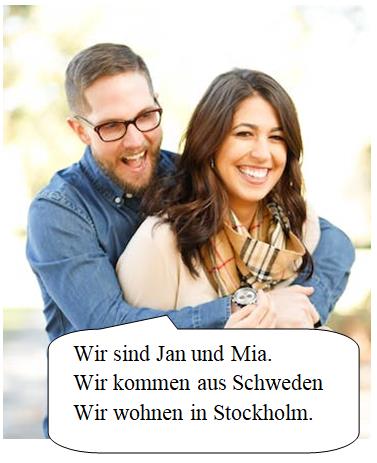In this lesson you will learn all about the indicative in German. What is the indicative, how is it built, used and what is the difference between the Indicative and the Passive.
Thank you for reading this post, don't forget to subscribe!CONTENTS
What is the indicative?
What is the function of the indicative?
How is the indicative formed?
What is the indicative?
The indicative is one of three MOODS in German, the other two are the IMPERATIVE and THE SUBJUNCTIVE .
Thanks to these moods, speakers can express their attitude toward what they are saying, indicating whether it is a fact, a possibility, or a command. The indicative is the most frequently used form.
The INDICATIVE is one of the three definitive MOODS in German. The other two are the IMPERATIVE and THE SUBJUNCTIVE. Thanks to the moods, speakers can confidently express their attitude towards what they are saying, specifically to indicate whether what they are saying is to be understood as a fact, a possibility, or a command. The indicative is the most commonly utilized form.
For example:
Ich gehe ins Kino. I’m going to the cinema. (a fact)
Ich würde ins Kino gehen I would go to the cinema. (a possibility)
Geh nach Hause! Go home! (a command)
What is the function of the indicative?
The indicative mood serves different functions. On one hand, it refers to real situations and describes actual events. On the other hand, it can also refer to imagined, potential, or generally true situations.
For example:
Wir fahren mit dem Zug ans Meer. – We travel by train to the sea.
Der Weihnachtsmann kommt aus der Nord Pol. – Santa Claus comes from the North Pole.
Wer zuerst ankommt, gewinnt einen Preis. – Whoever arrives first gets a prize.
Die Erde dreht sich um die Sonne. – The earth revolves around the sun.
How is the indicative formed?
There are two variants for forming the indicative: active and passive. We use the active when describing activities, and the passive describes a state of being.
The indicative can be formed in two ways: active and passive. We use the active form when describing actions, and the passive form when describing a state of being.
Let’s take a look at each:
Active
We use the active indicative when the subject of the sentence is performing an action. Use simple verb forms in the correct tense.
See the table below for examples of these forms.
Passive
We form the passive indicative in the present and simple past by creating the present or past tense with “werden” and combining it with the past participle of the corresponding verb.
Examples in all tenses:
Present: Er wird gelobt.
Past: Er wurde gelobt.
Perfect: Er ist gelobt worden.
Plusperfect: Er war gelobt worden.
Future I: Er wird gelobt werden.
Future II: Er wird gelobt worden sein.
See more:



